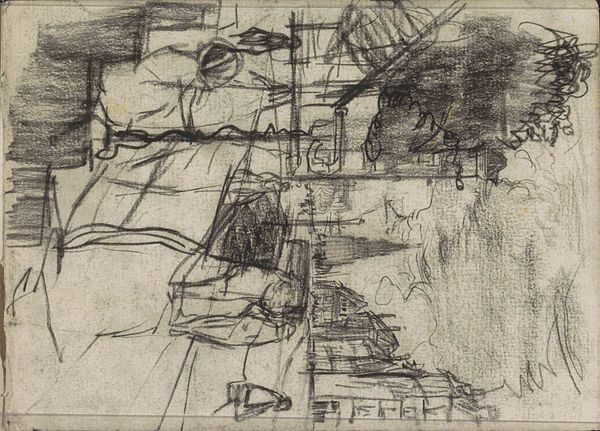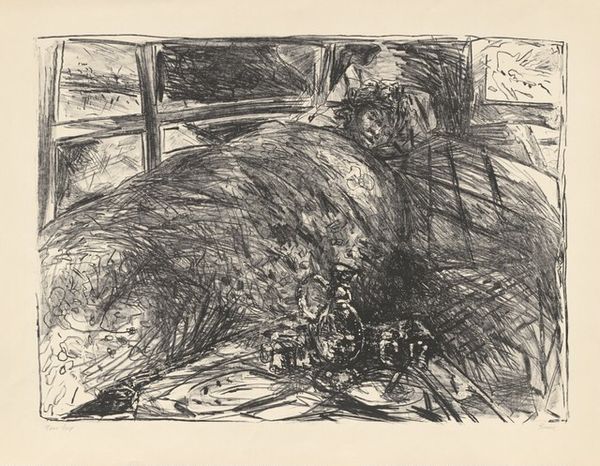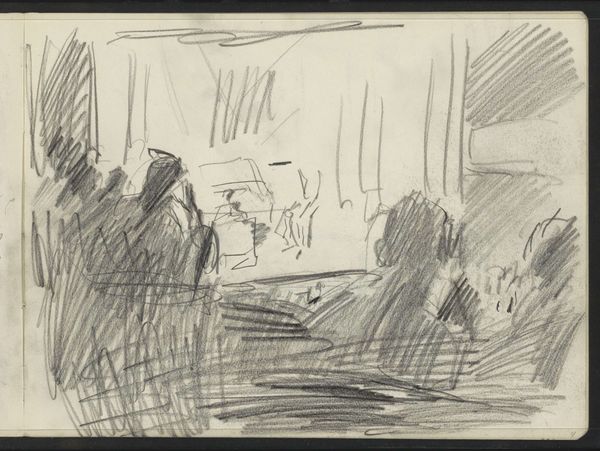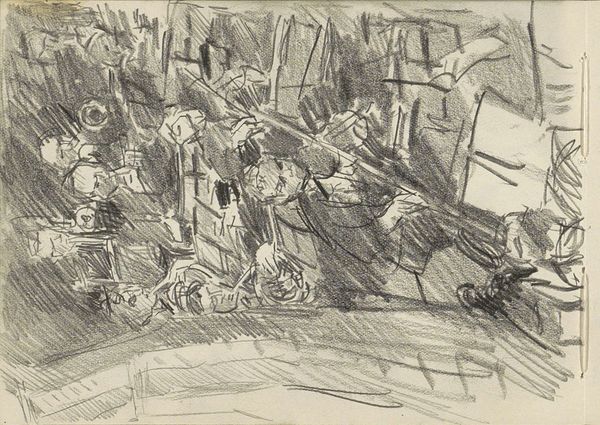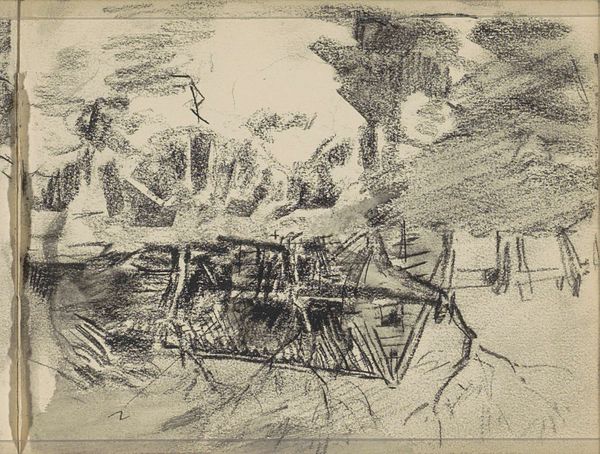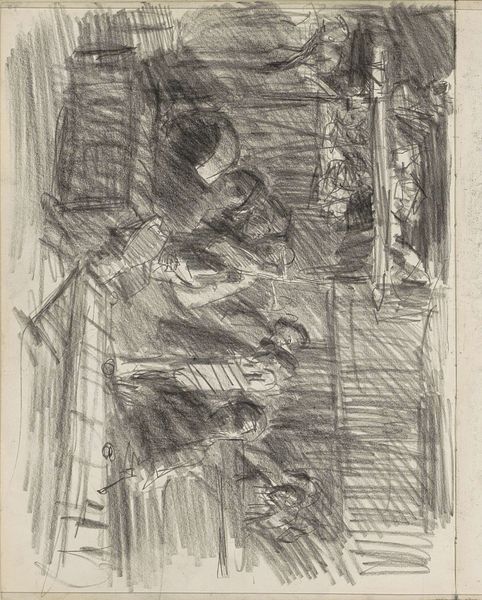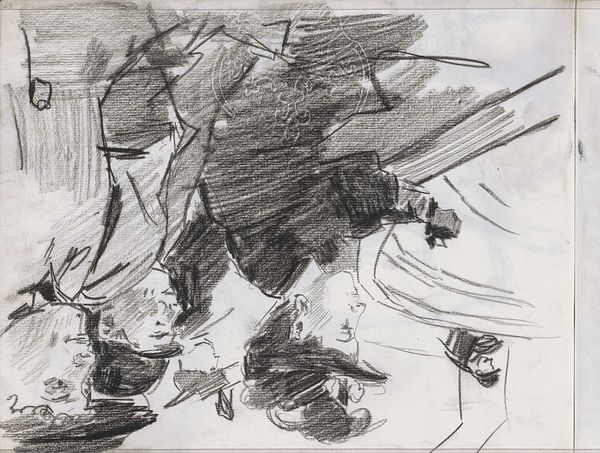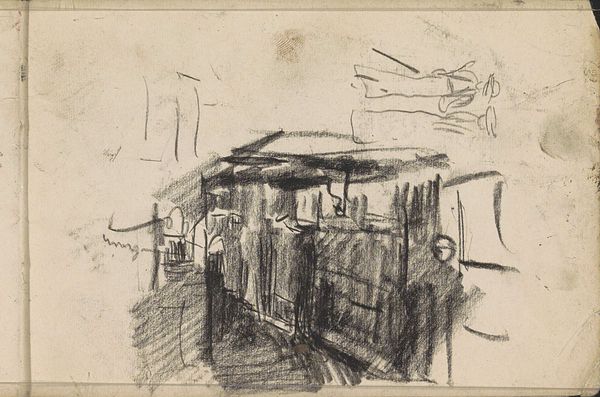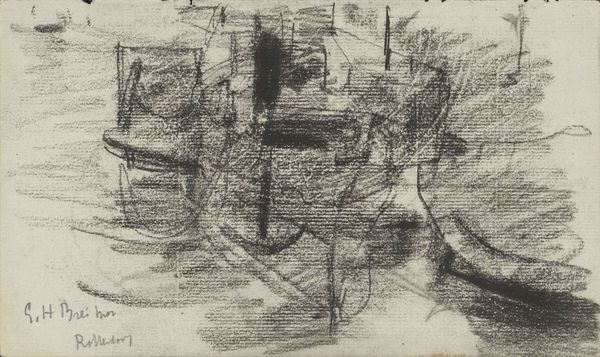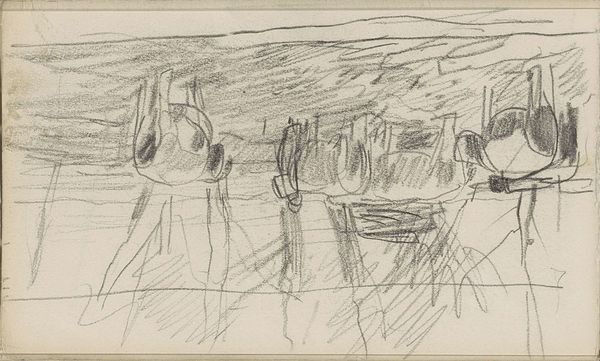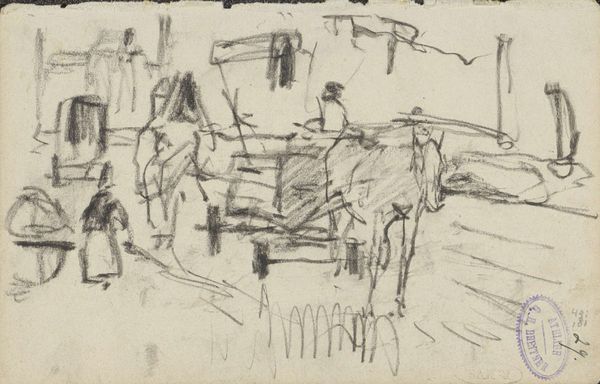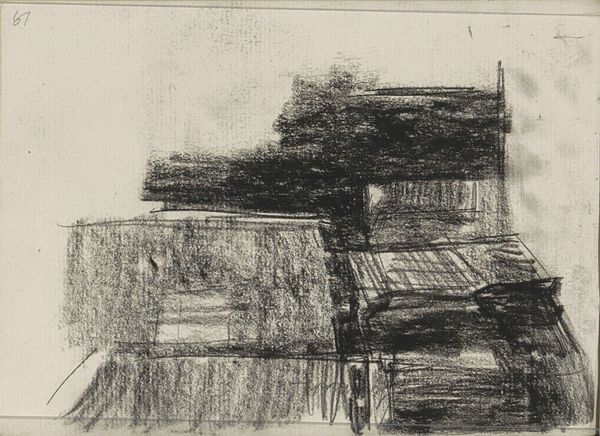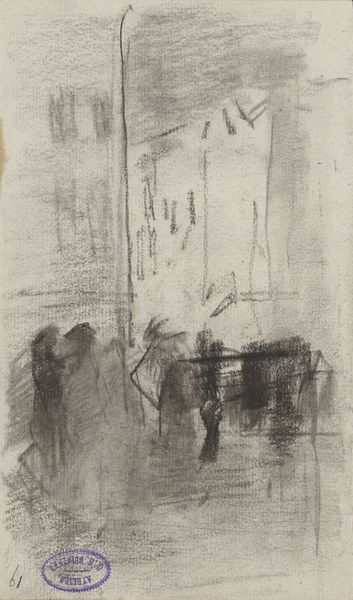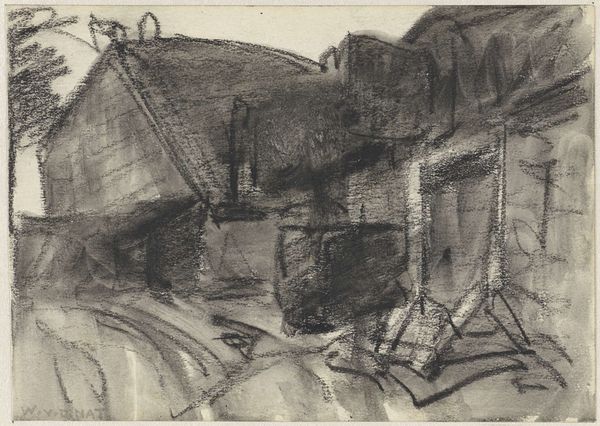
Copyright: Rijks Museum: Open Domain
Editor: This is Isaac Israels' "Spectators on a Balcony, possibly in a Box," created sometime between 1875 and 1934. It’s a pencil drawing, and it gives off such an intimate, behind-the-scenes feeling. What's your take on it? Curator: That's a perceptive initial reading. Israels, like many Impressionists, was captivated by modern life and leisure. The loose, suggestive lines emphasize fleeting moments. Consider the figures; they're predominantly white, likely upper-middle class, observing some spectacle below. Who has access to these spaces, and whose stories remain untold? Editor: So you see it as a commentary on class and spectatorship? Curator: Precisely. The drawing's unfinished quality emphasizes the transient nature of observation itself. Who are these spectators, and what are they watching? How might the performance reinforce or challenge their social standing? The implied gaze and direction of looking in this sketch evokes a racialized and gendered dynamic of power. Editor: I never considered the direction of their gaze, but I can see how it implicates their class privilege and status. The sketch-like quality, rather than diminishing the work, now suggests it's intentionally capturing a fleeting moment of cultural dynamics. Curator: And this begs the question of access and agency in how Israels as an artist renders this event and what biases and investments he brings with him. How does seeing this drawing through this lens affect your understanding of Impressionism generally? Editor: I guess I always focused on the light and color. Now I realize the choice of subject matter is just as crucial and, maybe, that my perspective was too limited before. Thanks for helping me think critically about what this drawing captures beyond the surface! Curator: My pleasure. Recognizing art's potential to mirror societal dynamics encourages richer, more nuanced dialogues.
Comments
No comments
Be the first to comment and join the conversation on the ultimate creative platform.
